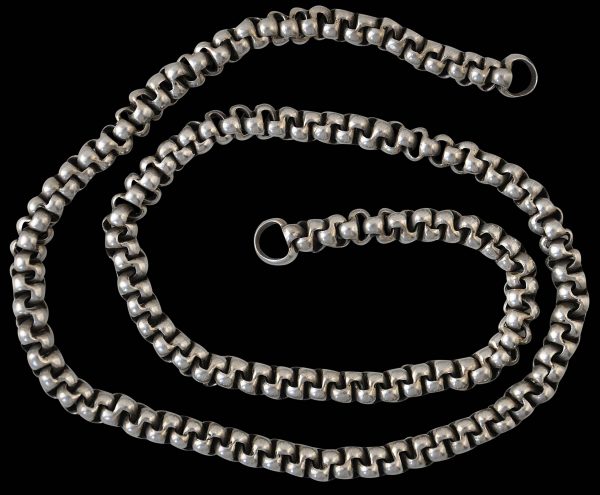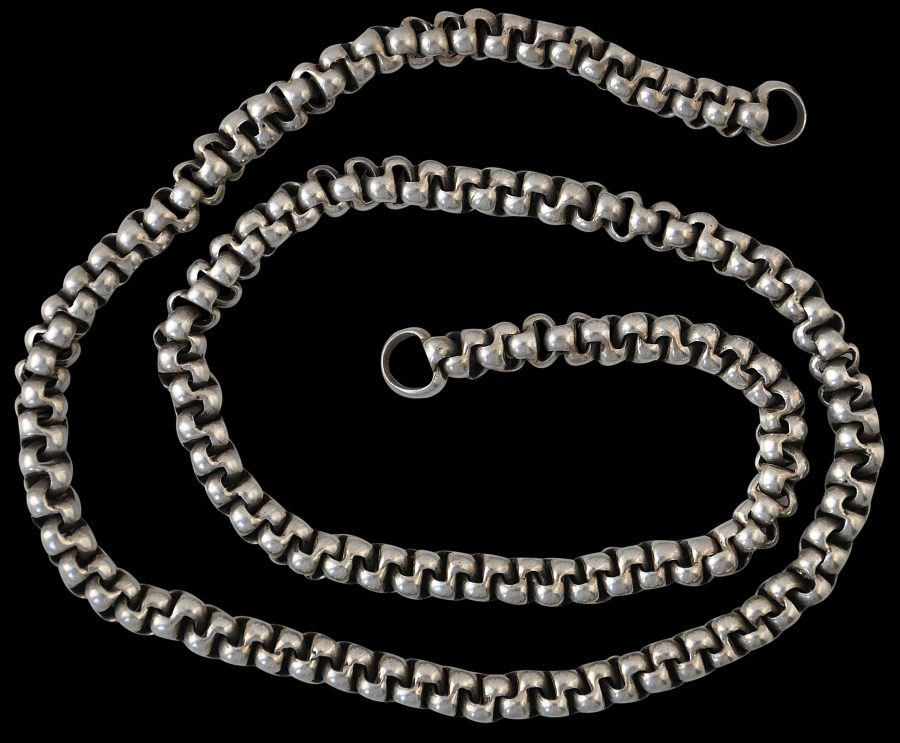This splendid silver chain probably was intended to be worn as a necklace. Its early construction is matched by a wonderful smooth feel that it has developed from wear and age. It comprises numerous thick, high-grade, solid figure-of-eight silver loops that fit closely together.
Reputedly it was excavated in the early 1970s from a site in Pegu, western Burma that included several Buddha images of a style dating to the fifteenth century, hence a fifteenth century dating for this chain.
Pegu, like Arakan, was a coastal kingdom in Burma with a long history of trade and commercial involvement with important trade centres elsewhere in the world. It was an important centre for rubies and sapphires and for centuries was home to small communities of Indian and Arab traders. Venetian and Portuguese traders visited in the seventeenth century. Ludovico de Varthema, a Bolognese adventurer, wrote in 1510 that its king was laden with gold and precious stones. He even wore rubies on each of his toes and that his ears hung down ‘half a palm’ because of all the weight of the precious stones suspended form them (Richter, 2000, p. 44).
Overall, this chain is highly wearable as a necklace. It is without a catch but one could readily be fitted. It is of a good weight in the hand and has a splendid, lustrous patina. :acquired by a British diplomat whilst serving in Burma during the early 1970s.
References
Richter, A., The Jewelry of Southeast Asia, Thames & Hudson, 2000.



